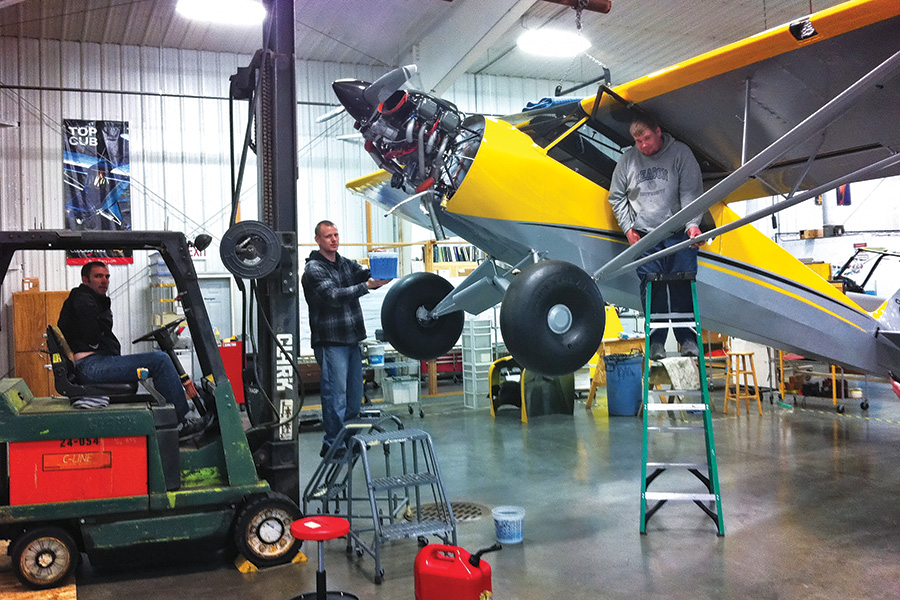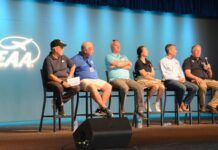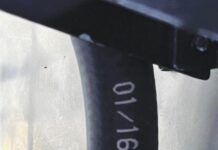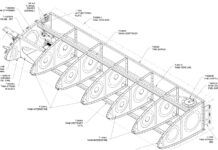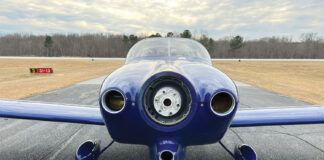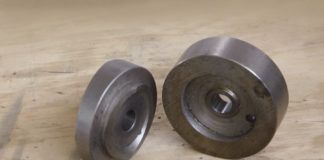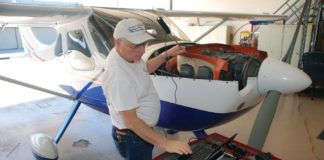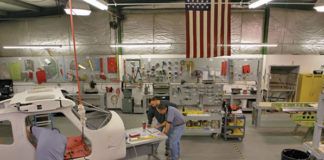Sometimes what you think you know and what you really know don’t match up. When you are in the position of giving advice, this can lead others astray and potentially cause harm. Which brings me to my article on fuel systems in the December issue (“Firewall Forward”).
The error in the article was to indicate that testing fuel flow at an up-angle of 15° was adequate. It isn’t. I later came across an FAA advisory circular, AC 90-89A, which says the fuel system should be tested when the aircraft is in a nose-up attitude of maximum climb plus 5°. Though this angle is not the same for every aircraft, an approximation of the correct angle is closer to 25°. Calls to various kit manufacturers revealed a range of practices when it comes to conducting these tests, but all use a steeper angle than I recommended. My mistake was not taking into account the angle of the plane to the ground as it approaches a power-on stall, which exceeds the wing’s angle of attack. I also didn’t allow for a safety factor as the FAA does.
CubCrafters performs the fuel-system test in its Yakima, Washington, factory. If you have a big enough hoist, you don’t need to drive around the airport looking for a hole.
My Cub actually holds a 20° angle with the ground, measured with a Smart Level, just before it stalls under full power. Some planes hold an even higher angle. Van’s reports that some of its designs will hold up to a 23° angle on the edge of a power-on stall. This means the fuel system needs to be checked at a 25-28° nose-up angle to be in line with AC 90-89A.
Getting a plane into this nose-up angle is no small chore. My original method of using an engine hoist to lift the nose proved inadequate; it just wouldn’t go high enough. AC 90-89A unhelpfully suggests that you dig a hole and lower the tail into it for the test. But the hole needs to be pretty big and roughly 4 feet deep. Hope you have a backhoe handy, and you’d better check with the airport manager before trying this approach.
Eventually I found a drainage culvert that I could drop the tail into without much trouble. It wasn’t really deep enough, but it helped. By blocking up the mainwheels a bit I was able to get to 25°. You’ll need to round up lots of help to get your plane into such a position and out again. While I was doing it, I was thinking, Who the heck is ever going to do this?
A better solution is for kit manufacturers to do these tests and make the results available to customers. If the builders then assemble their fuel systems exactly like the factory planes, the level fuel-flow test should be sufficient to determine whether the fuel system works correctly. I believe this is the recommendation the EAA is going to make to the Airplane Kit Industry Association (AKIA).
If you are wondering if testing is worth the trouble, consider that the NTSB report, The Safety of Experimental/Amateur-Built Aircraft, identified engine failures as the cause of 15.2% of fatal accidents and 23% of all accidents for Experimentals. Fuel-system problems contributed to a number of these and could largely be prevented with pre-first-flight testing. The NTSB also recommended that the FAA change its regulations to require fuel-system testing as part of the airworthiness certification process. EAA hopes to preempt regulation changes through a program of voluntary education and compliance. If the accident rate can be brought down via a voluntary program, there is a better chance of retaining control of the testing process.

